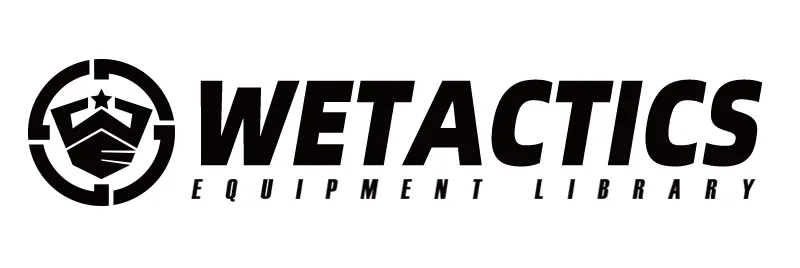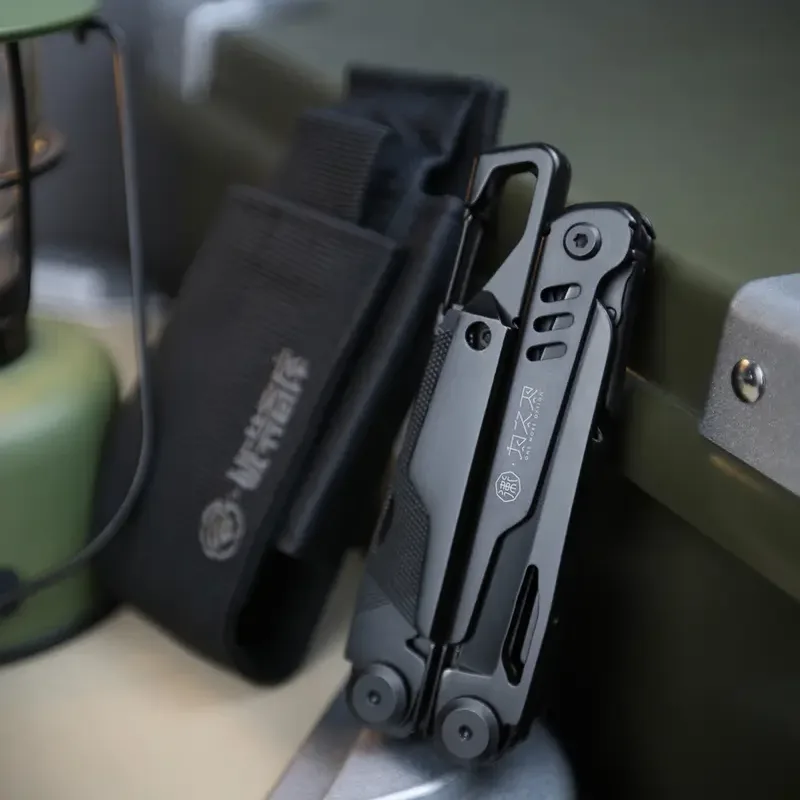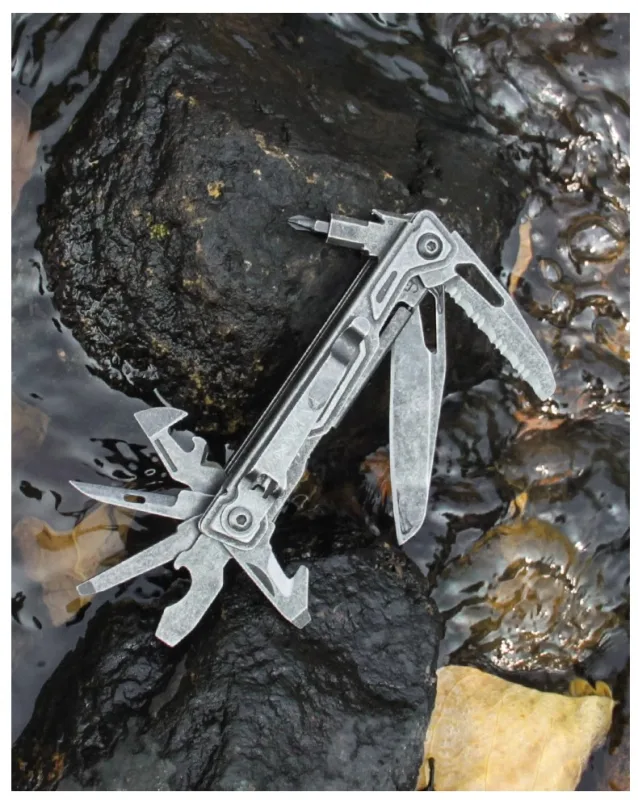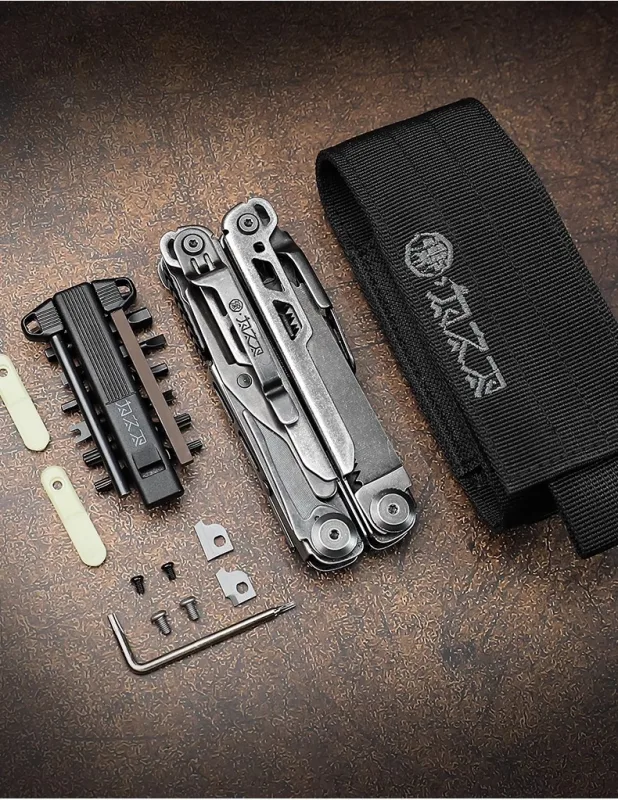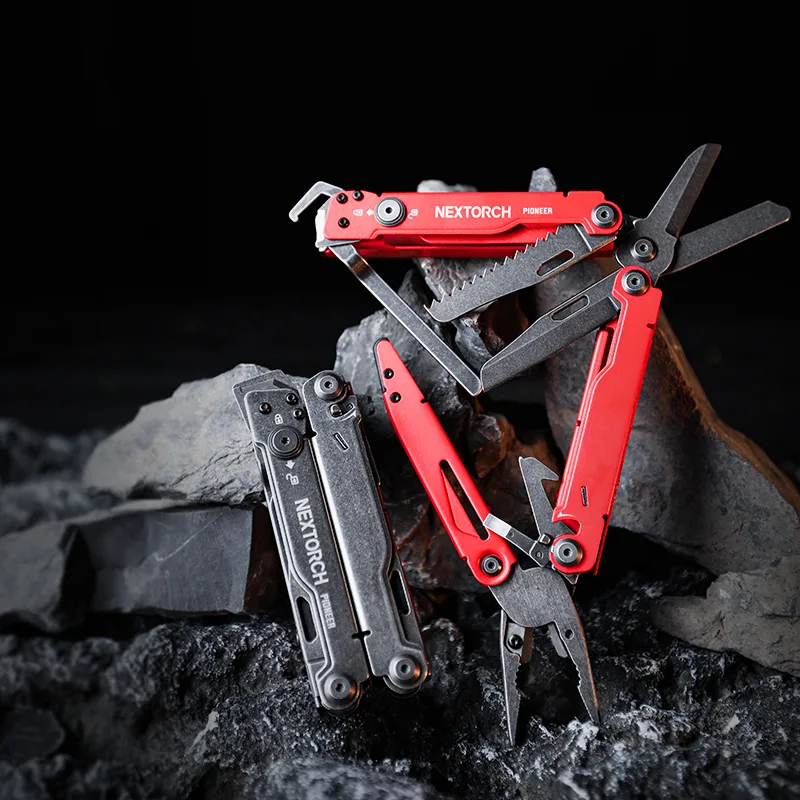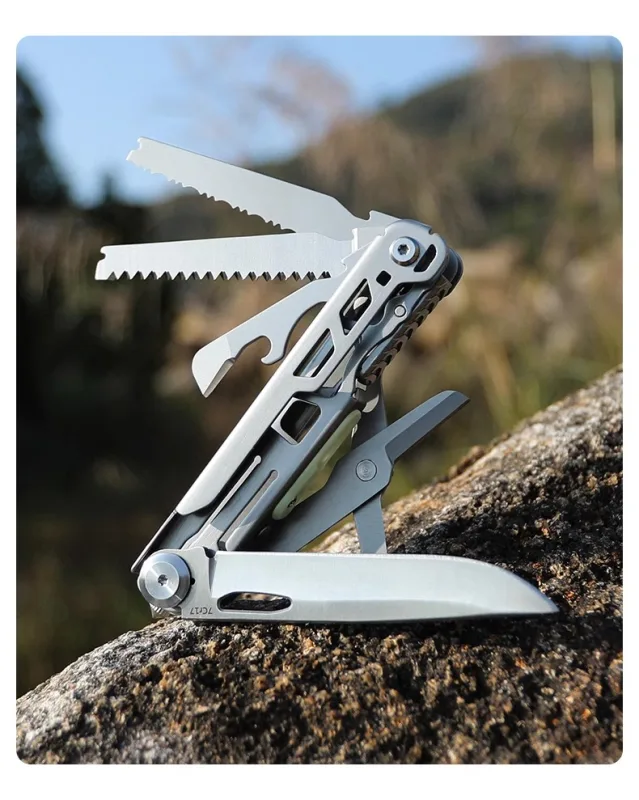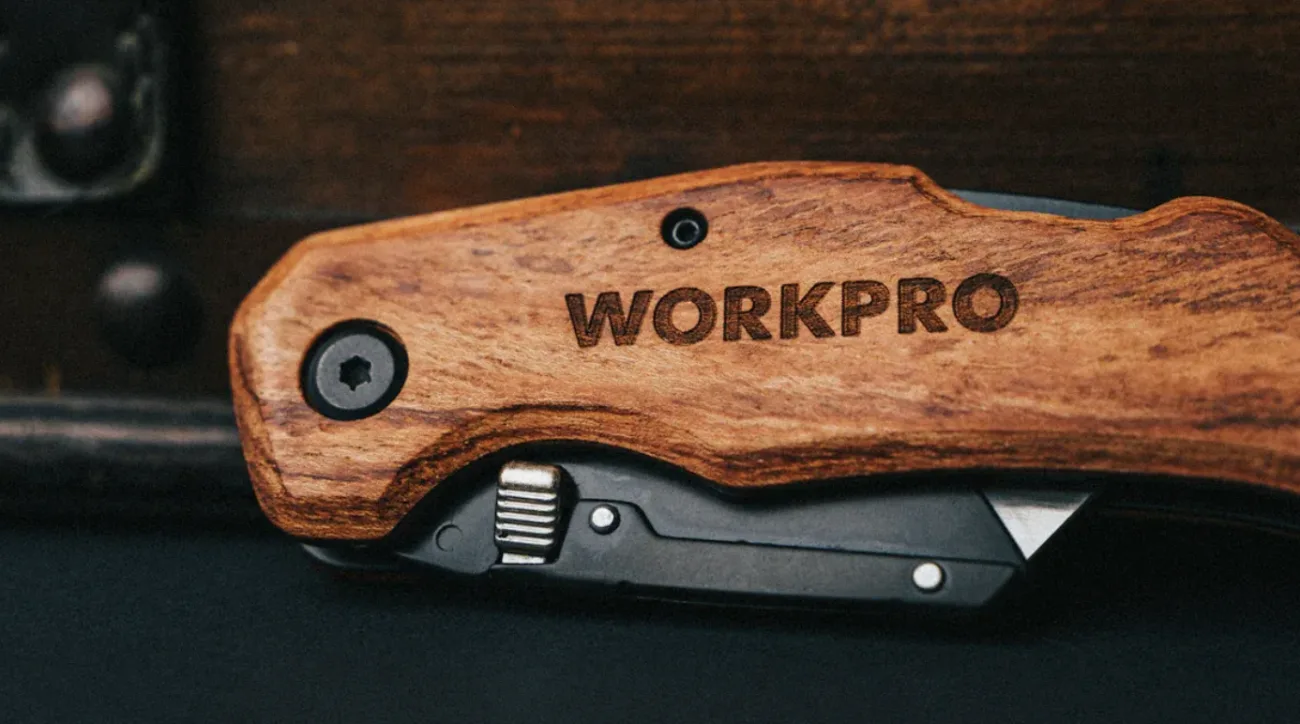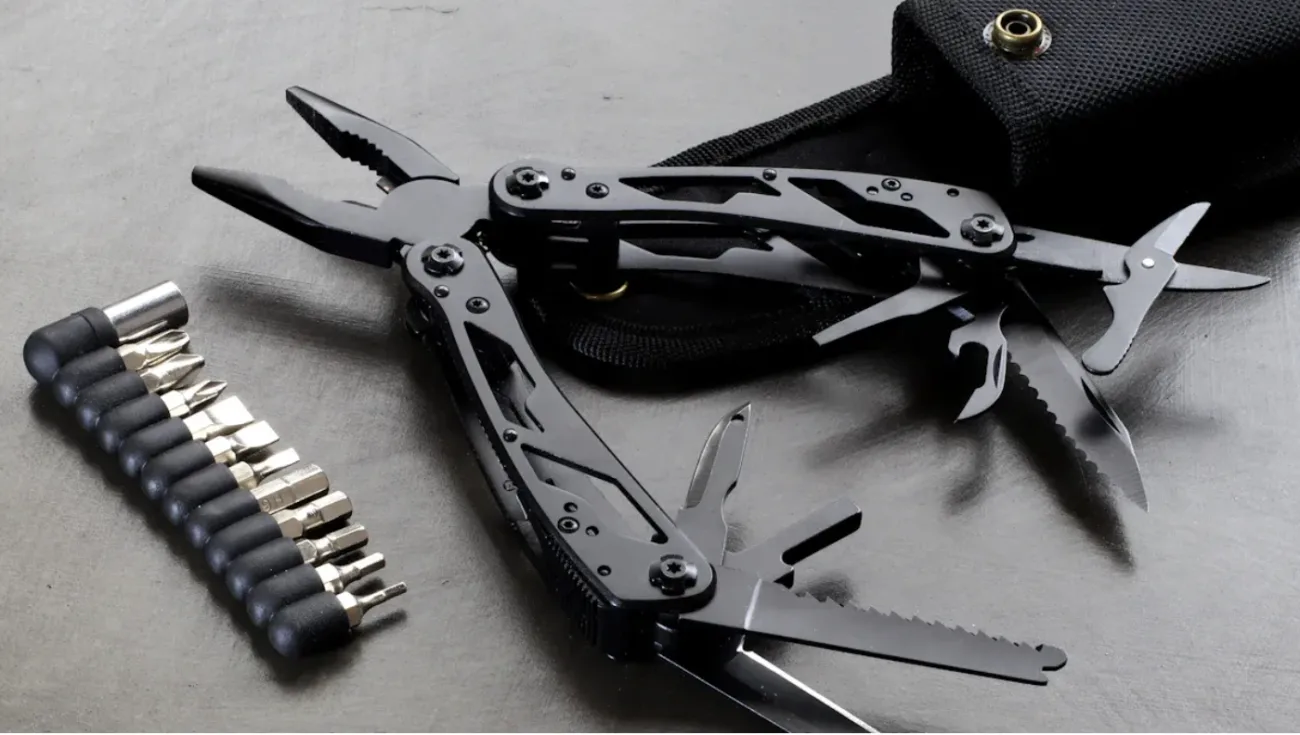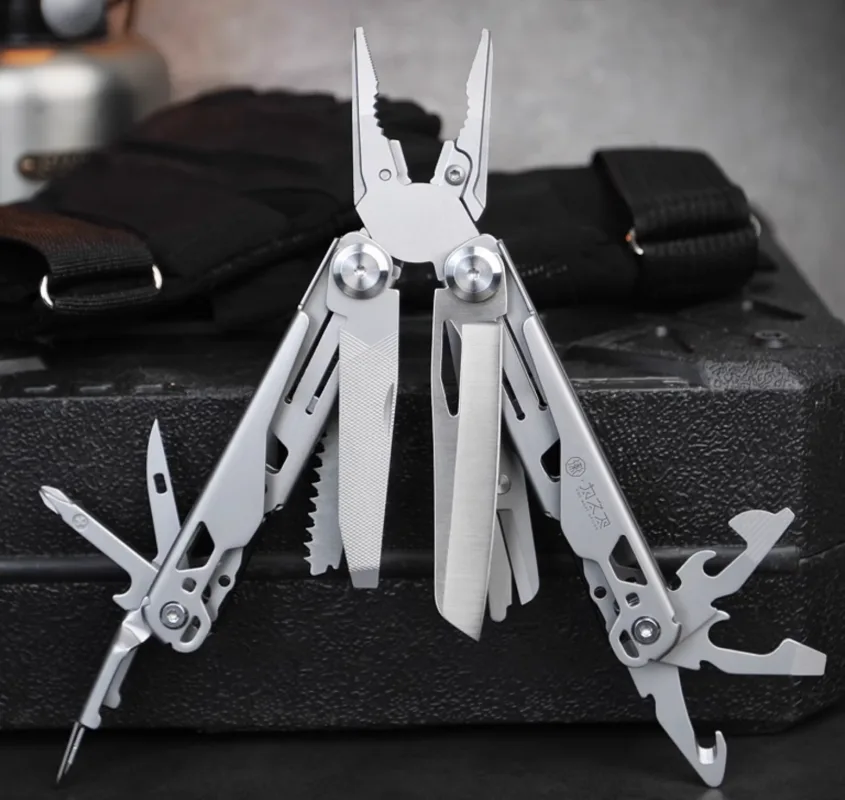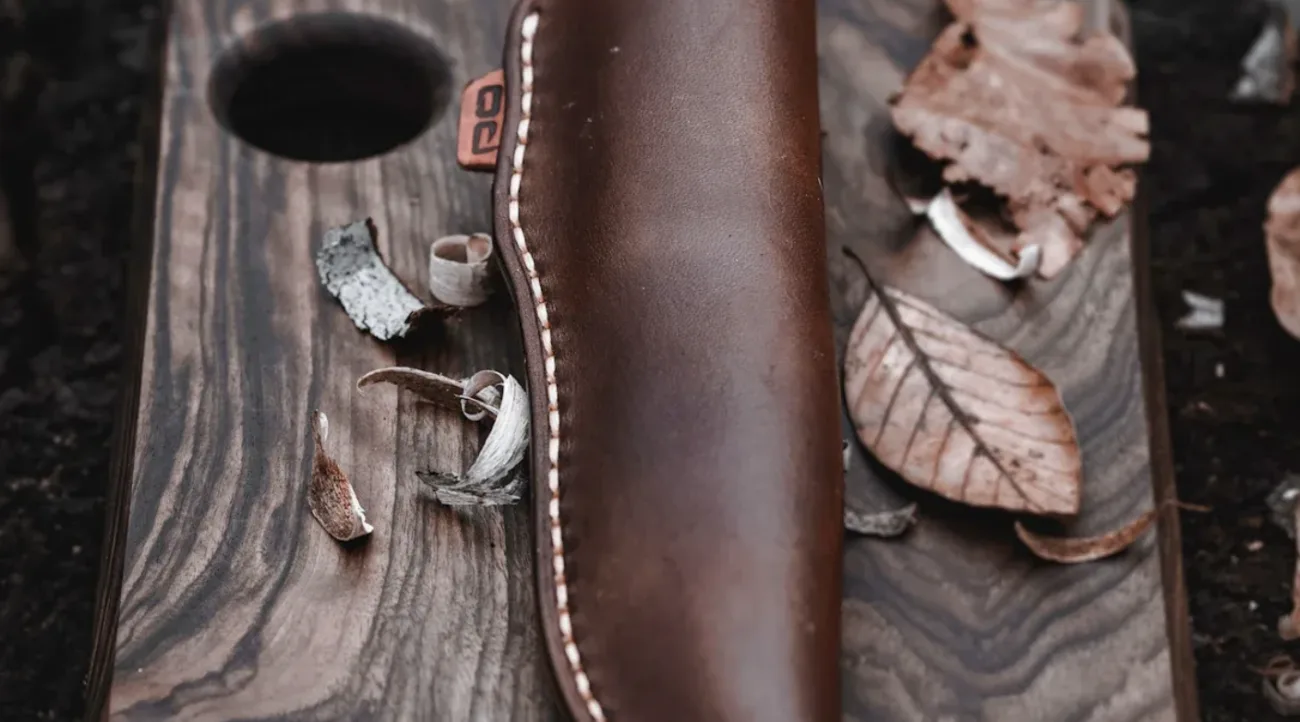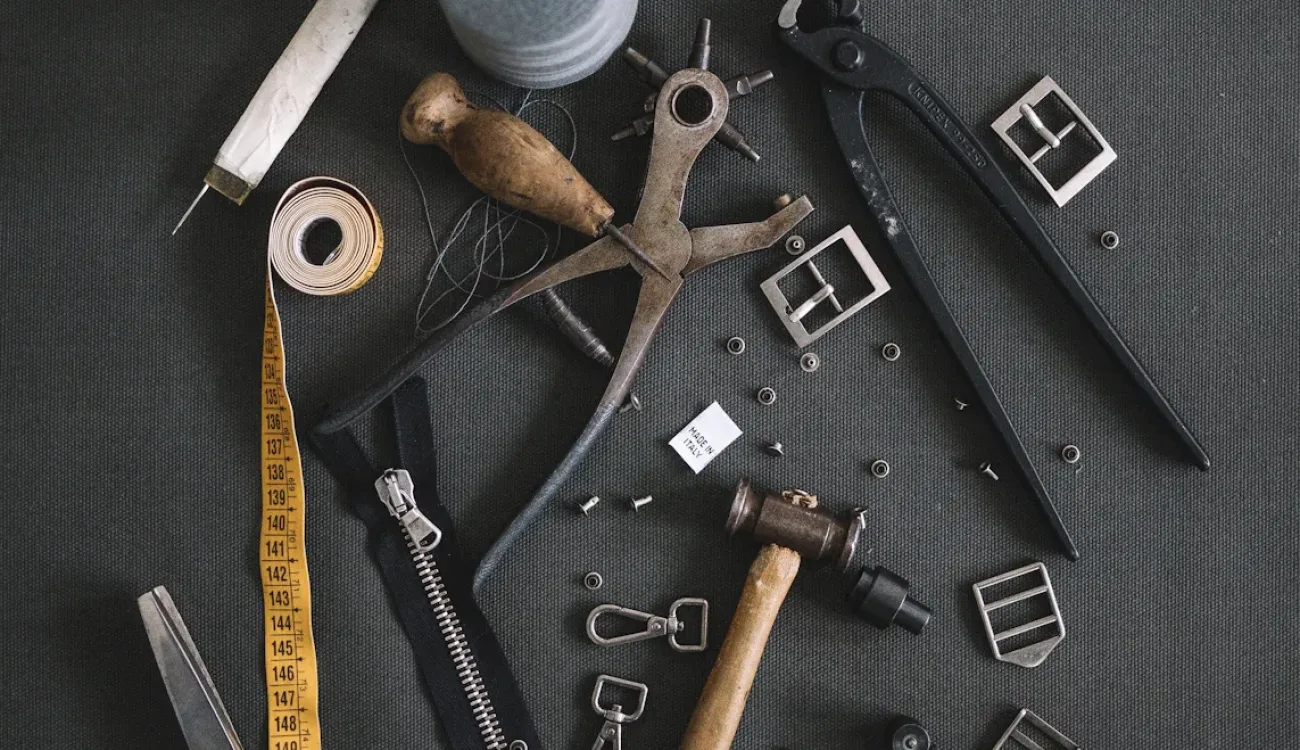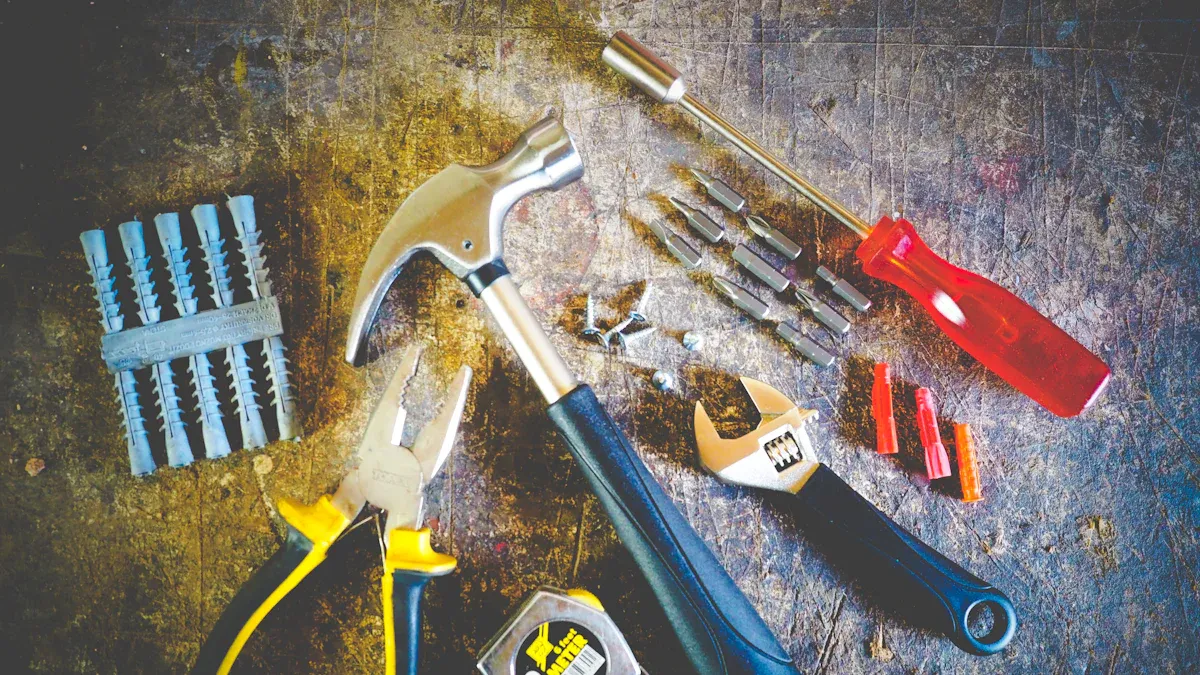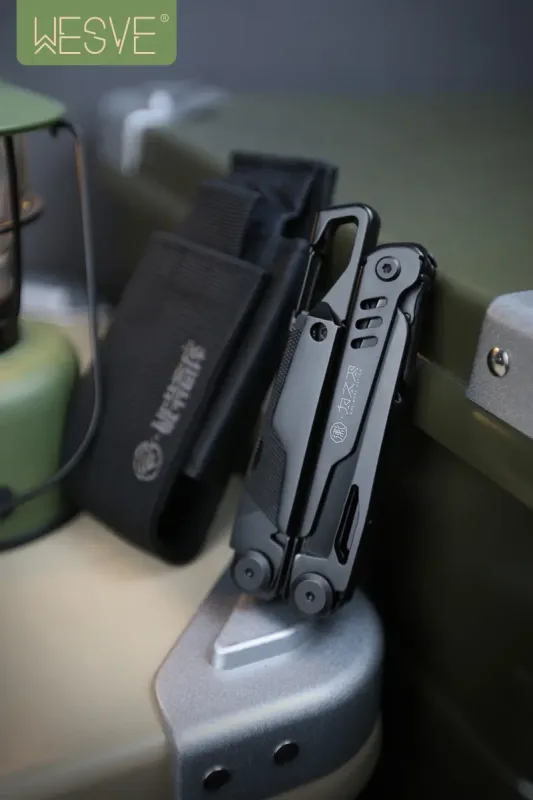The Journey of Multitools: From Ancient Rome to Today
Picture having one tool that fixes many problems. People have loved this idea for hundreds of years. From ancient Rome to now, multitools have changed how we solve problems. Rich Romans used folding knives with extra tools. These knives were useful and creative. In the 1800s, pocket knives with corkscrews and awls were must-haves for travelers and workers. Now, multitools have cool designs and are super useful for jobs and hobbies. They aren’t just tools—they show being ready and flexible.
Key Takeaways
- Multitools have been around for a long time. Ancient Rome made tools that combined many functions into one device.
- The Swiss Army multitool changed this idea in the late 1800s. It became useful for soldiers and regular people.
- Tim Leatherman created a new multitool in the 1980s. It added pliers and other tools, making it great for many jobs.
- Today’s multitools have smart features, making them helpful for work and daily tasks.
- Having a multitool shows you are ready and clever. It is a useful item for everyone.
Ancient Beginnings
The Journey of Multitools
The Roman Folding Multitool
Think about having one tool for many tasks. Romans made this possible with their folding multitool around 200 AD. Archaeologists found one at a Mediterranean site. It was made of silver and had a rusty iron knife blade. It also included a spoon, fork, spike, spatula, and toothpick. This tool wasn’t just useful; it showed wealth and status. Rich travelers or officials probably owned these multitools. They were both practical and fancy.
The Roman multitool was crafted with great skill. It was easy to carry and perfect for eating while traveling. Forks weren’t common at Roman meals but might have been used in surgeries. Similar multitools were found in Bulgaria and northern Italy. This shows they were popular in many places. These tools weren’t just helpful; they showed how clever and advanced Roman society was.
Everyday Uses in Ancient Rome
In Rome, multitools were important for daily life. They weren’t just tools; they helped with many activities. For example, the Roman folding multitool was great for eating while traveling. It had a knife, spoon, and spatula for meals. Multitools also had other uses. The spike and toothpick helped with grooming. The spatula might have been used for mixing or applying things.
These tools also showed Roman social habits. Owning one meant you were prepared and stylish. It showed you cared about being practical and classy. The Roman multitool wasn’t just a tool; it showed your way of life. Rich travelers or officials used them to be ready for anything.
Even long ago, people used multitools. Levallois cores, found in East Asia, are 80,000 to 170,000 years old. They were like early “Swiss Army knives.” These tools helped humans spear, slice, scrape, and dig. This proves multitools have always been important for survival. The Roman multitool kept this idea alive, mixing usefulness with culture.
The Swiss Revolution
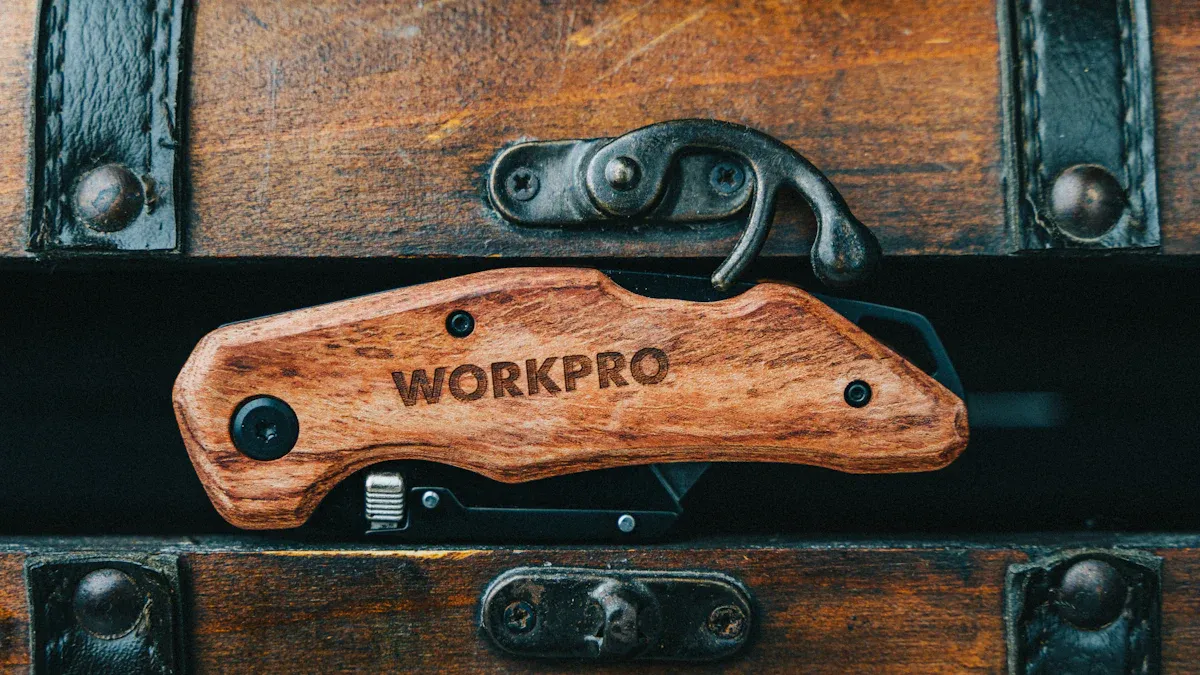
The Creation of the Swiss Army Multitool
In the late 1800s, Switzerland made a game-changing tool. The Swiss Army multitool, first made in 1891, helped Swiss soldiers. It combined a knife, screwdriver, can opener, and reamer in one. Soldiers could open cans or fix rifles without carrying many tools.
The first multitool, called the “Soldier’s Knife,” was simple but useful. Karl Elsener, who started Victorinox, created it. He wanted a tool that was strong, handy, and easy to carry. His design became the start of one of history’s most famous tools.
Key Features and Innovations
The Swiss Army multitool quickly added new features. Victorinox later included saws, fish scalers, and scissors. These made it great for campers, hunters, and fishers. The SwissChamp model has over 30 tools for many tasks.
Smaller models like the Classic SD brought it into daily life. These tiny versions fit on keychains or in pockets. They became useful for everyone, not just outdoor fans. Even NASA used Swiss Army knives in space missions. This showed they worked well in tough conditions.
Here’s a quick look at some key innovations:
| Key Innovations | Description |
|---|---|
| Specialized Tools | Added saws, fish scalers, and scissors for more uses. |
| SwissChamp Model | Over 30 tools in one multitool for many tasks. |
| Urban Models | Small versions like the Classic SD for everyday use. |
| NASA Collaboration | Used in space, proving they work in harsh places. |
| Professional Customizations | Special models for firefighters and electricians added more options. |
These updates show how the Swiss Army multitool stays useful for everyone.
Becoming a Global Icon
The Swiss Army multitool is more than just a gadget. It stands for quality and smart design. People love it because it’s practical and trustworthy. Hikers, travelers, and workers like its small size and many uses. Studies say over 70% of outdoor fans pick multitools for saving space.
It’s not just about what it does. It shows you’re ready for anything. Whether hiking or fixing things at home, it’s handy. This makes it a favorite worldwide and a symbol of being prepared.
The Leatherman Era
Tim Leatherman’s Idea
Think about traveling in Europe during the 1970s. Tim Leatherman faced problems like fixing a car or cutting bread. He didn’t have the right tools for these tasks. This gave him the idea to create a tool for many uses. He wanted it to be small, strong, and helpful.
After years of work, he made the Pocket Survival Tool (PST). By 1983, it was ready for sale. The PST had pliers, screwdrivers, and a knife in one. This invention started a new chapter for multitools.
Leatherman Multitool’s Success
Leatherman’s tool became popular fast. In its first year, 30,000 tools were sold. By 2001, sales hit $100 million, with 20 million tools sold worldwide. People loved its strength and usefulness.
Social media helped it grow even more. TikTok videos showing multitools boosted holiday sales by 90%. People also wanted tools that were easy to use and did many jobs. This made Leatherman a top brand.
| Evidence Type | Description |
|---|---|
| Market Report | North America Multi Tool Market Report 2025 shows rising interest. |
| Consumer Trends | People want tools that are easy and useful. |
New Uses for Leatherman Tools
Leatherman tools now help in many jobs. Special models are made for electricians, firefighters, and outdoor fans. For example, wire cutters help with electrical work. Stronger tools are great for rescue workers.
In North America, 60% of homes own at least one multitool. Around the world, people like different designs. In Europe, small and eco-friendly tools are popular. In Asia-Pacific, more people want tools for outdoor fun.
| Region | Consumer Preference | Notable Trends |
|---|---|---|
| North America | Focus on safety features | High interest in user safety |
| Europe | Like stylish and eco-friendly designs | Lightweight tools are trending |
| Asia-Pacific | Growing interest from middle-class buyers | More outdoor activities increasing demand |
Leatherman keeps up with these trends, making its tools useful everywhere.
Modern Marvels
Technological Advancements in Multitools
Today’s multitools use new technology to meet modern needs. Designers add smart features to make them better and easier to use. Some tools now have AI that learns how you use them. This helps suggest the right tool for each job. Others use cloud systems to save and share data. This is great for people working together from different places.
Here’s a simple look at recent improvements:
| Improvement Type | What It Does |
|---|---|
| AI Features | Uses smart learning to find patterns and predict needs. |
| Cloud-Based Tools | Lets users access advanced features online anytime. |
| Better Visual Displays | Shows results with cool 3D images and interactive charts. |
| Automatic Analysis | Guides users to pick the best methods for their data. |
| Future Tech | Quantum computing and AR may bring even smarter tools soon. |
These updates show how multitools are keeping up with tech trends. They’re now more useful for both work and daily life.
Specialized Multitools for Industries
Different jobs now use multitools made just for them. In healthcare, multitools combine tools for checking and surgery. This saves time and reduces mistakes during procedures. In construction, smart multitools with IoT features help workers finish tasks faster and better.
The multitool market was worth $2.7 billion in 2023. It’s growing by about 4.90% every year and will keep growing until 2030. This shows more people want tools made for specific jobs. DIY fans lead the market, loving tools for home projects. Travel-friendly tools are also growing fast, perfect for outdoor lovers who want small, light designs.
Multitools in Everyday Carry Culture
Multitools are now a big part of everyday carry (EDC) culture. Popular models like the Leatherman Skeletool CX and Wave+ are small and easy to carry. They’re great for daily tasks like opening boxes or fixing things quickly. Surveys say people want multitools made with strong materials and lots of features. This ensures they get good value for their money.
EDC culture shows how important it is to be ready for anything. Whether at home, work, or outside, a multitool helps you handle surprises easily. This makes them a favorite for people everywhere.
The Philosophy of Multitools
Multitools as Symbols of Preparedness
Tools have always shown readiness and flexibility. In ancient times, people carried tools for their jobs. Farmers used farming tools, and warriors kept weapons and repair tools nearby. This showed the need to be ready for daily tasks.
In the medieval and Renaissance eras, knights carried tools to fix weapons. Tradespeople had special tools for their work. In the 1900s, soldiers in World Wars used multitools to survive and adapt. These examples prove that tools like multitools have always stood for being prepared.
Today, carrying a multitool means you follow this same idea. It’s not just about having a tool—it’s about being ready for anything. Whether fixing something at home or solving outdoor problems, a multitool shows you are resourceful and independent.
The Future of Multitool Innovation
The future of multitools is exciting with new ideas coming up. Companies are focusing on eco-friendly materials and renewable energy. For example, multitools might soon use sustainable packaging to match customer values.
| Trend Category | Key Insights |
|---|---|
| Renewable Energy | Brands are working on tools powered by renewable energy. |
| Reducing Waste | People want tools made with less waste and more care. |
| Socially Responsible Sourcing | Companies are choosing ethical ways to get materials. |
| Environmental Sustainability | Tools are being made to help protect the environment. |
Future multitools may also include smart features like AI to predict needs. Cloud-based tools could help people work together better. These updates will make multitools even more useful for work and fun. By listening to customers, companies can create tools that fit perfectly into daily life.
Why Multitools Remain Timeless
Multitools stay popular because they solve everyday problems. Their simple and strong design makes them useful for years. For example, Leatherman tools are tough and easy to use for any job.
Their ability to adapt is another reason they remain loved. Multitools work for many lifestyles, like outdoor fans, DIYers, or anyone who values being prepared. Today, more people want to rely on themselves, making multitools even more important.
Using a multitool is more than just using a gadget. It’s about being practical and confident. This mix of usefulness and meaning ensures multitools will stay part of our lives for a long time.
The history of multitools shows how humans solve problems creatively. Over time, these tools changed to fit new needs:
- In ancient Rome, around 200-300 CE, the first multitool appeared. It combined items like a spoon, fork, and knife.
- The Swiss Army Knife, made in the late 1800s, changed multitools forever. It was small and had many uses.
- In the 1980s, the Leatherman added pliers and other cool features.
These moments show how multitools grew from simple gadgets to symbols of readiness. Owning one means you value being practical and prepared.
FAQ
1. What is a multitool, and why is it useful?
A multitool is a small device with many tools in one. It helps with different tasks like repairs or outdoor fun. Its small size and many uses make it great for being prepared.
2. How do I choose the right multitool for my needs?
Think about what you do every day. If you like camping, get one with pliers and a saw. For daily tasks, pick a smaller one with scissors and a knife. Always check if it’s strong and has the tools you need.
💡 Tip: Stainless steel multitools last longer and work better.
3. Are multitools allowed on airplanes?
Most multitools with blades can’t go in carry-on bags. But TSA-approved ones without sharp parts are okay. Always check airline rules before flying.
4. Can multitools replace traditional tools?
Multitools are good for quick fixes and small jobs. But they can’t replace big tools for tough tasks. Use them as a handy backup, not a full replacement.
5. How do I maintain my multitool?
Clean your multitool after using it. Dry it well to stop rust. Add a little oil to moving parts to keep it working smoothly. Taking care of it will make it last longer.
🛠️ Note: Keep your multitool in a dry spot to avoid rusting.

